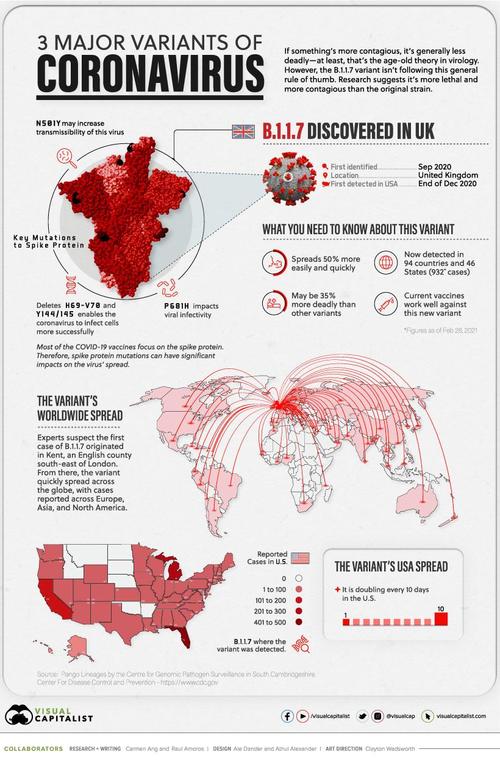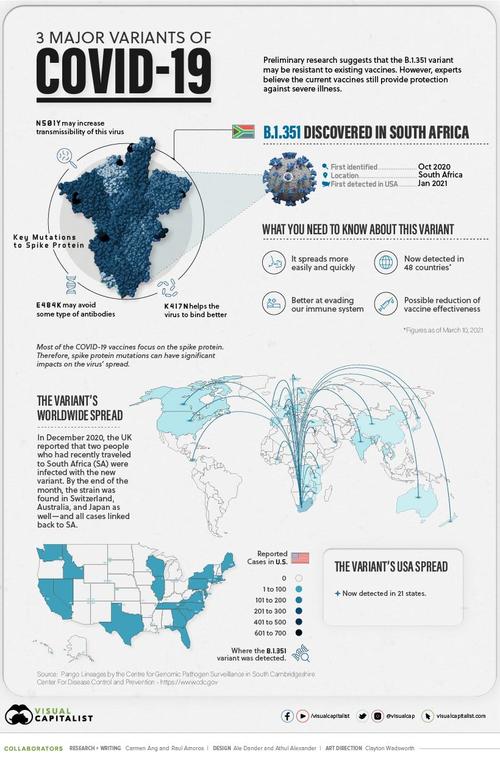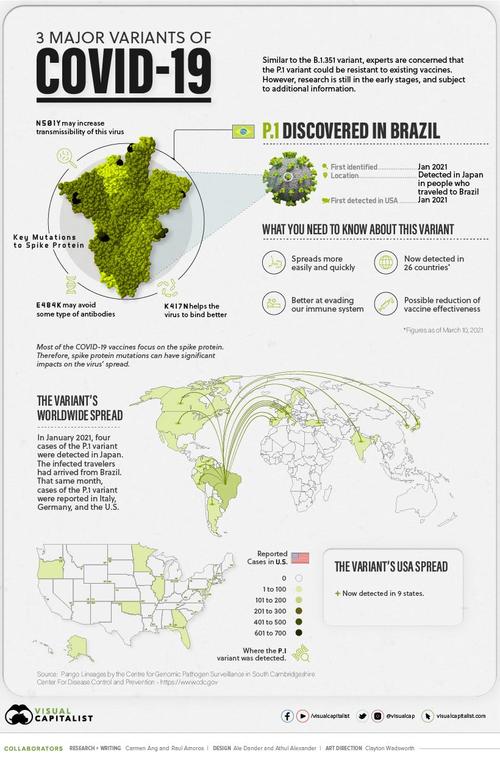The three variants of Covid-19 explained easy


As billions of people prepare for widespread vaccination against COVID-19, with a concern: Will it be effective against variants? There are three main variants of COVID-19 that have emerged around the world and early data suggest that there may be some cause for concern.
With the help of Carmen Ang Carmen Ang of Visual Capitalist, let's now try to understand what makes them worrying and special.
The following factsheets answer some key questions, including when these variants were first discovered, how far have they spread around the world, and most importantly, their potential impact on the population.
First of all, what is a variant and why do viruses mutate?
To infect someone, a virus takes over a host cell and uses it to replicate, but nature is not perfect and sometimes mistakes are made during the replication process – those mistakes are called mutations .
A virus with one or more mutations is referred to as a variant . Most of the time, the variants do not affect the physical structure of a virus and eventually disappear. However, there are some cases where a mutation affects a part of the genetic makeup of a virus which modifies its activity.
According to the U.S. Centers for Disease Control (CDC), a major change can alter:
- Transmission speed
- Mortality
- Ability to potentially infect someone with natural or vaccine-induced immunity
Preliminary research has found some of these changes in the three main variants of COVID-19: B.1.1.7, B.1.351, and P.1.
The 3 main variants of COVID-19
The three main variants emerged at different times and in different parts of the world. Here is an overview of each variant, when they were discovered and how far they have spread so far.
B.1.1.7
Variant B.1.1.7 was detected in the UK in autumn 2020. By December 2020 it had spread across the globe, with cases emerging in Europe, North America and Asia.

Currently, the variant has been reported in approximately 94 countries.
Early research suggests that it is 50% more transmissible than other variants and potentially 35% more deadly than the standard virus. Fortunately, studies suggest that some of the existing vaccines work well against it.
B.1.351
The second major variant was discovered in October 2020: B.1.351. It was first identified in South Africa, but by the end of the year it had spread to the UK, Switzerland, Australia, and Japan.

There are around 48 countries with reported cases, and research suggests that many of the existing COVID-19 vaccines may not be as effective against this variant.
P.1
Variant P.1 was the last to arrive on the scene.

It was first discovered in January 2021, when Japan reported four cases of the variant, which was found in travelers who had arrived from Brazil.
About 25 countries have reported cases of the P.1 variant, and early research suggests that this variant is not only more contagious, but may also have the ability to infect people with natural immunity who had already recovered from the original strain.
Still in its infancy
While there have been preliminary studies showing a decline in vaccine efficacy, some experts point out that it's too early to say for sure. More data is needed to gain a deeper and more accurate understanding.

Thanks to our Telegram channel you can stay updated on the publication of new articles of Economic Scenarios.
The article The three variants of Covid-19 explained easy comes from ScenariEconomici.it .
This is a machine translation of a post published on Scenari Economici at the URL https://scenarieconomici.it/le-tre-varianti-del-covid-19-spiegate-facili/ on Sun, 14 Mar 2021 16:15:59 +0000.
